The fluffiest sourdough buttermilk bread is a great way to use up extra buttermilk. A delicious sandwich loaf with the most fluffy interior and golden brown crust to make the perfect and versatile loaf.
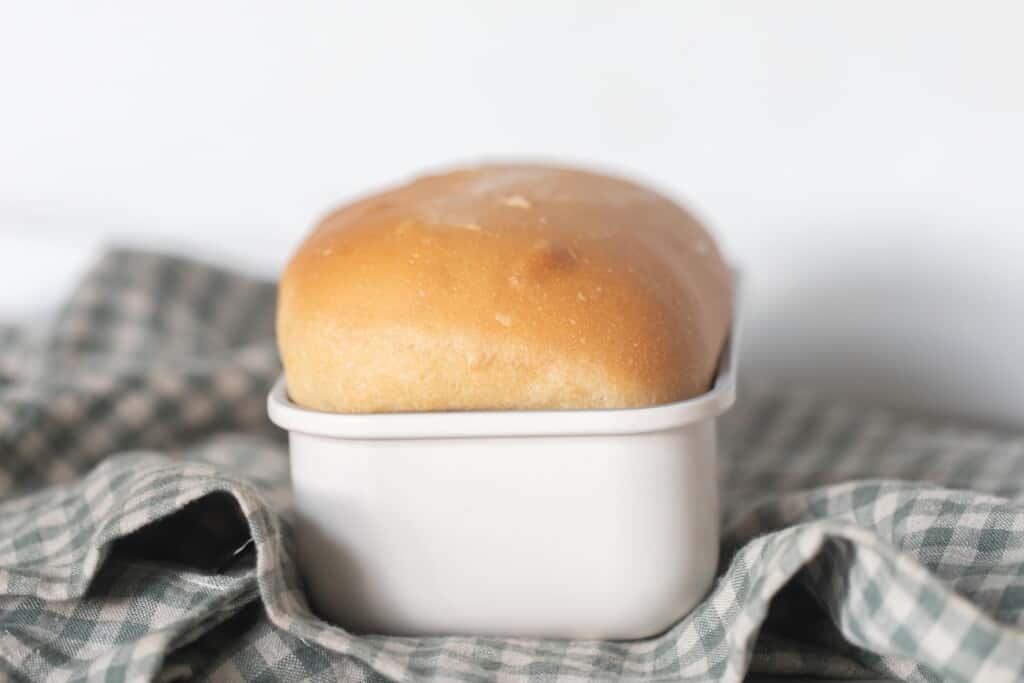
We are in full milking season currently. And our cow June is producing tons of creamy milk. So much so we are basically drowning in it. It’s a constant struggle to deal with it daily, rotate the old stuff out and put the new stuff in, and try to figure out how to use it all.
I’ve been making a lot of butter, which also means a lot of buttermilk. It is a super simple thing to make. Just pour the cream into the blender and turn it on. It just works its magic as I do other things around the kitchen. After a few minutes it is done and ready to strain and use. It’s fantastic.
As a naturally frugal person, I hate letting things go to waste and the thought of just pouring the buttermilk down the drain isn’t appealing so I’ve been trying to figure out other ways to use it.
So I started adding it to homemade bread, and it is so good. It makes it so fluffy and smooth.
It’s perfect for sandwiches, toast with some peanut butter, french toast, and more.
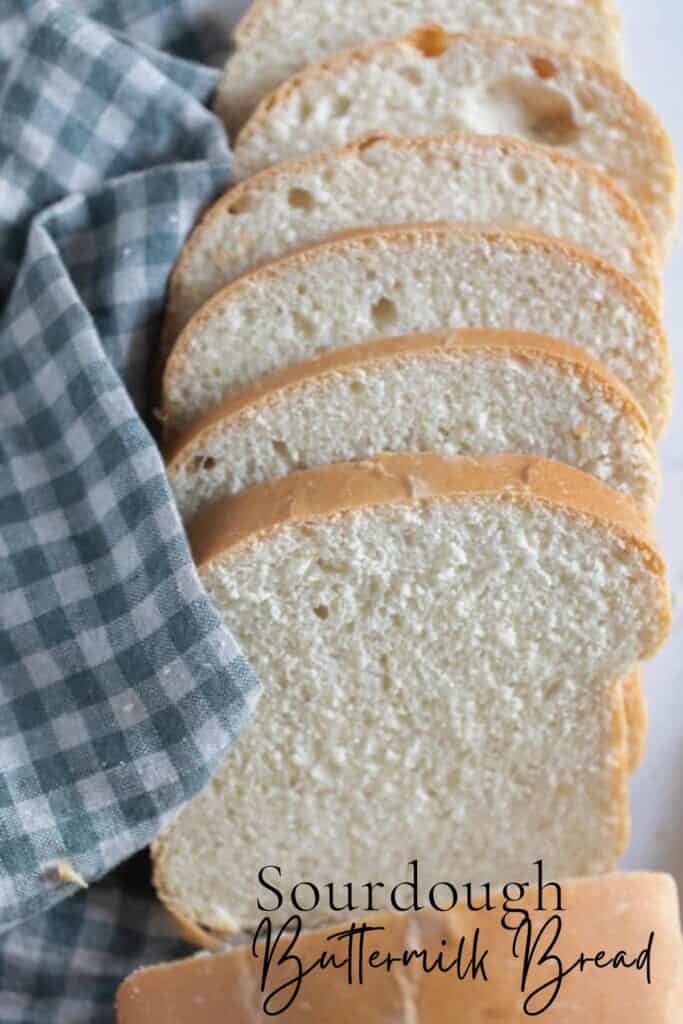
Tips:
- This recipe used the wild yeast from the sourdough starter to give it rise rather than commercial yeast. I’m sure there would be a way to use active dry yeast and sourdough discard, but I haven’t tried that yet.
- If you are new to the sourdough world, make sure to check out how to make your own starter and all my sourdough recipes here.
- While this recipe does include buttermilk, if you find yourself out, regular milk will do just fine.
- Making your own buttermilk is super simple. Just use the milk leftover from making butter, or you can make it by adding a tiny bit of vinegar to regular milk.
- If after shaping you run out of time to bake, you can stick this recipe covered with plastic in the refrigerator for 12-15 hours. Then bake.
This post contains affiliate links, which means I make a small commission at no extra cost to you. See my full disclosure here.
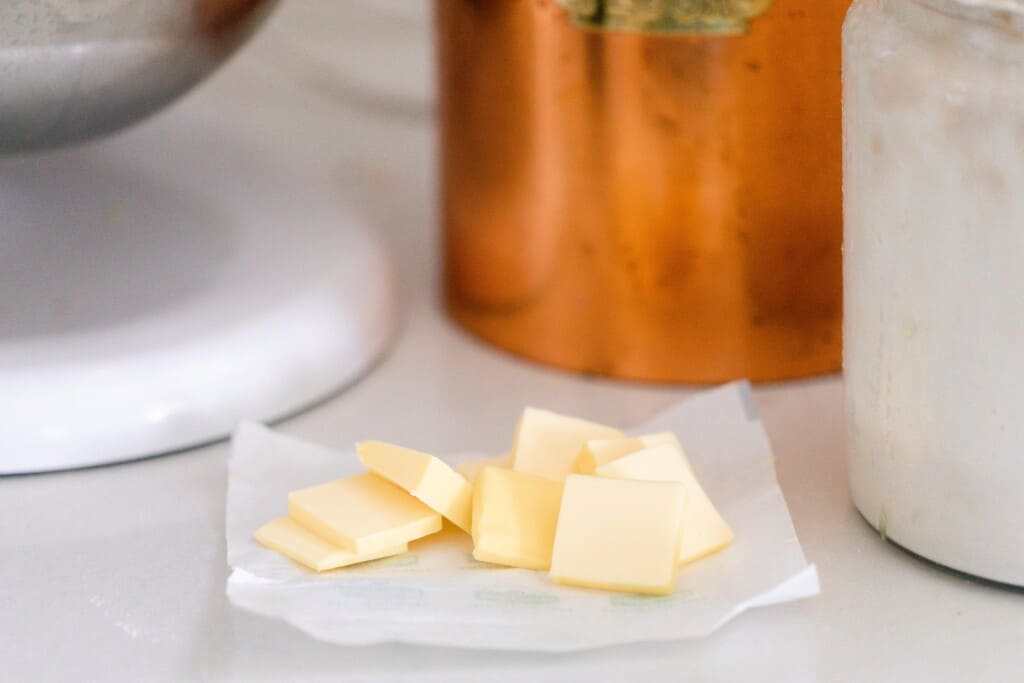
Ingredients:
Butter (softened): A little butter gives it such a good texture. Such a fluffy and soft bread rather than tougher like a loaf made in the dutch oven.
Honey: Could also substitute with maple syrup.
Salt
Active sourdough starter: In order to make a loaf of sourdough, you need a really active starter. If the starter isn’t mature enough, you will probably end up with a flat, not so desirable loaf.
Buttermilk – If you don’t have buttermilk you can just substitute with whole milk.
All purpose flour
Tools you may need:
Measuring cups and spoon or a kitchen scale
Parchment paper
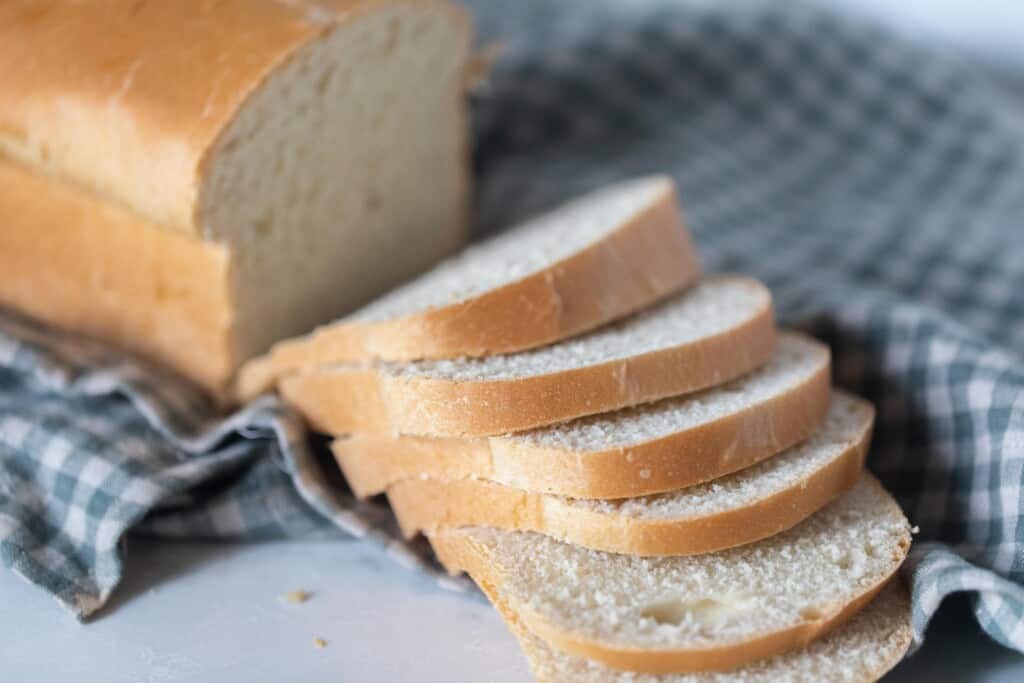
How To Make Buttermilk Sourdough Bread
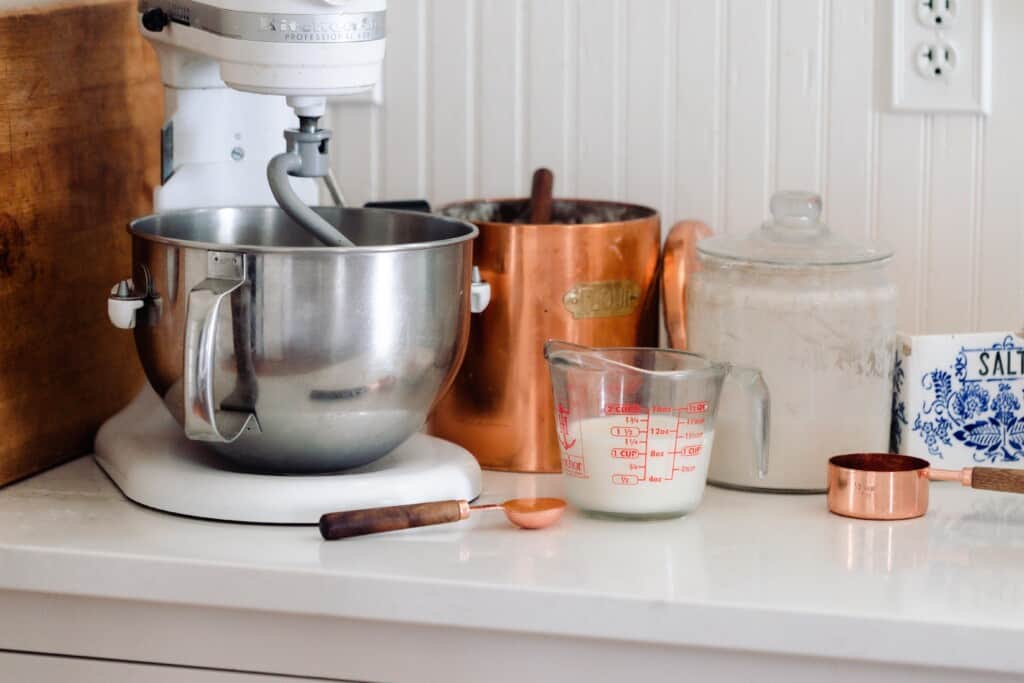
To a stand mixer bowl with a dough hook attachment, add all of the ingredients. I like to add the flour last, so I can add a bit less or more depending on my starter’s hydration.
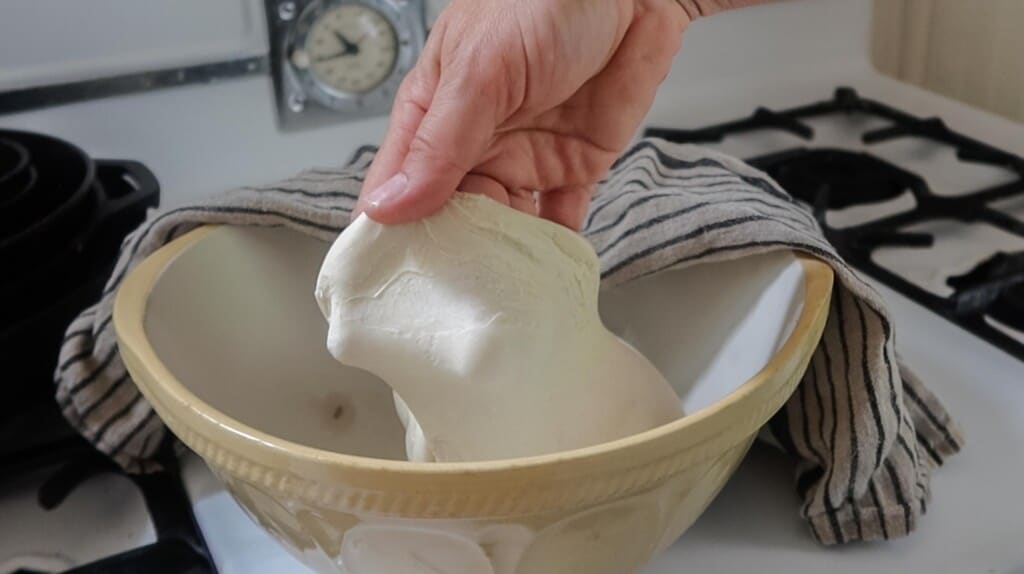
Knead on low until dough is stretchy and smooth. You want it to pull away from the sides of the mixing bowl and be smooth and elastic – about 10 minutes. It should pass the windowpane test. You can also do this by hand kneading.
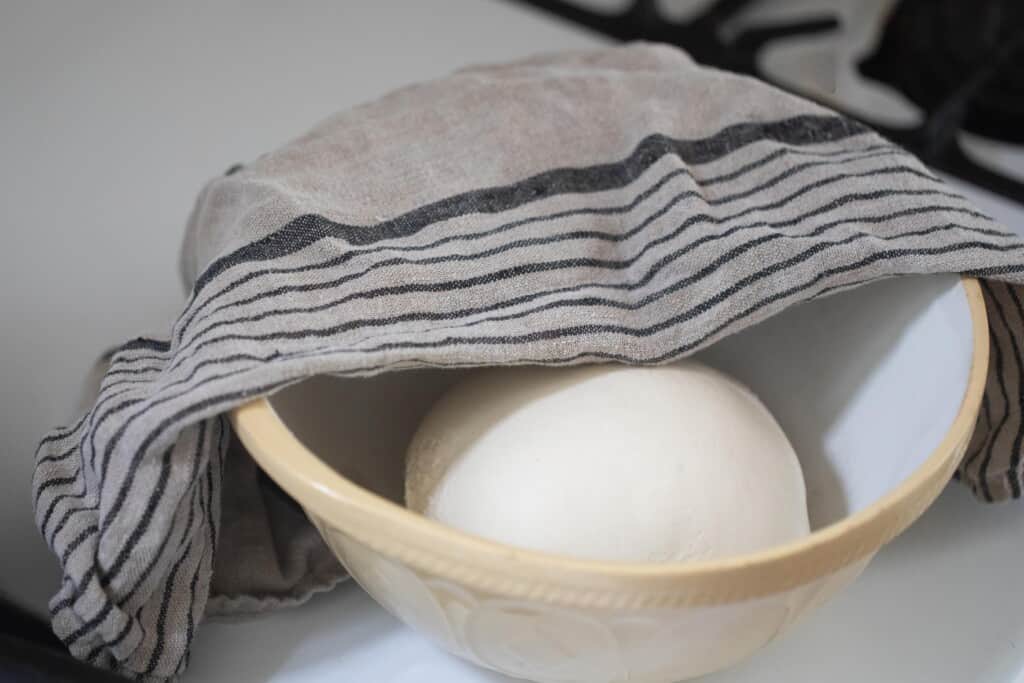
Place in a lightly greased bowl with a lid, damp towel, or cover bowl with plastic wrap.
Allow to bulk rise for 10-12 hours in a warm place like on top of a stove or refrigerator (not in the refrigerator).
Shape the dough:
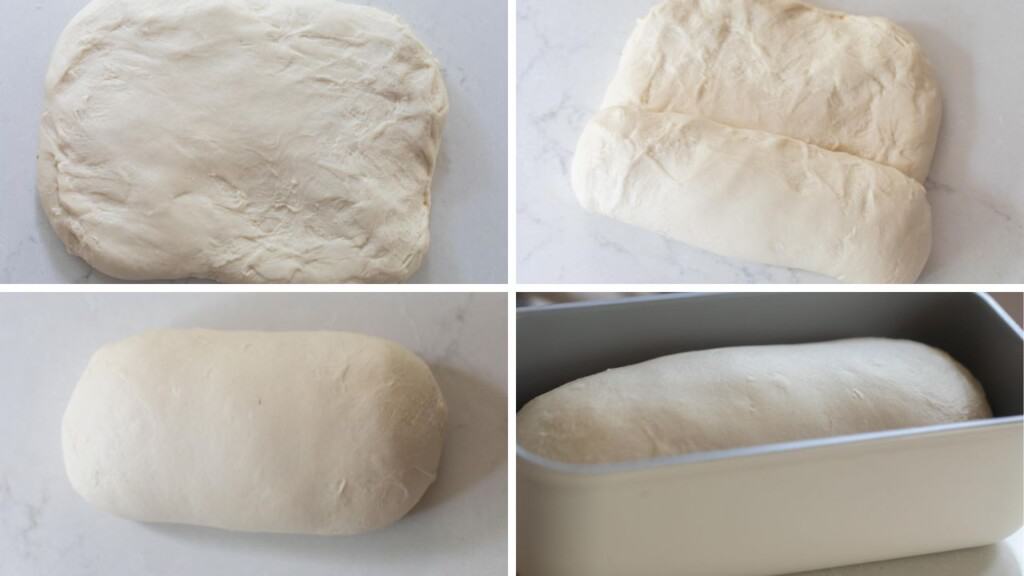
Place the dough on a clean work surface that has been lightly floured.
Roll the dough flat into a rectangle and roll it up tightly. This adds tension to the dough which helps give it that oven spring.
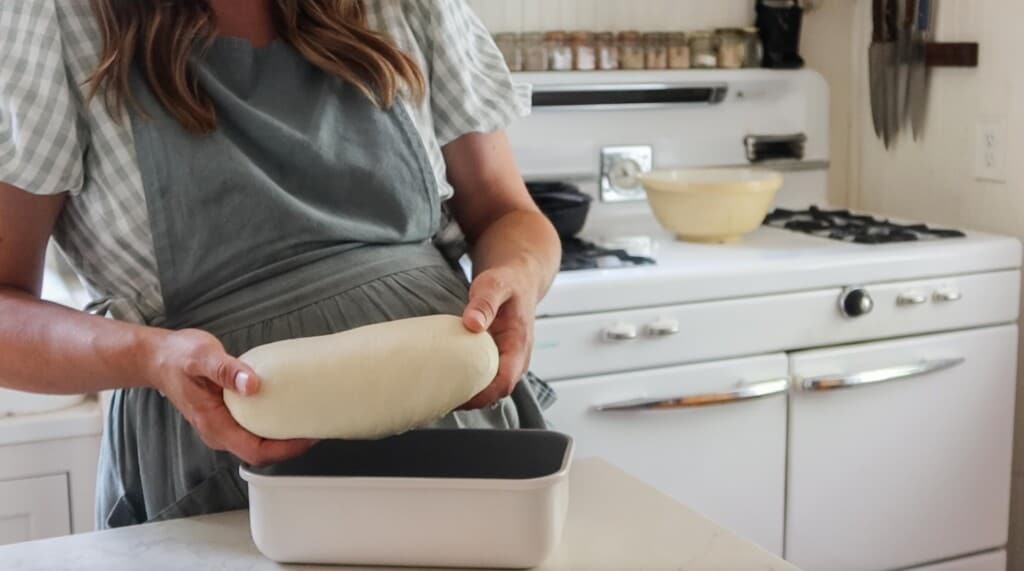
Add to parchment lined or buttered loaf pans. Cover with a dish towel.
Rise
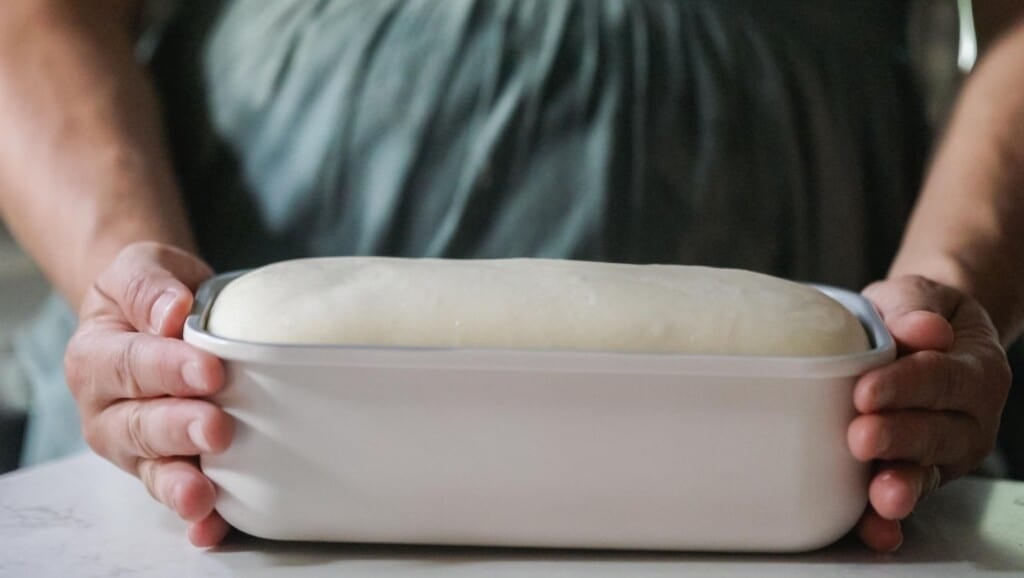
Allow the dough to rise again for about 2-4 hours at room temperature, or until doubled.
Preheat the oven to 375 degrees F.
Add an optional egg wash for more browning.
Bake for 45 minutes, or until golden brown. The internal temperature should be about 190 degrees when it is baked through.
Allow to cool completely before slicing.
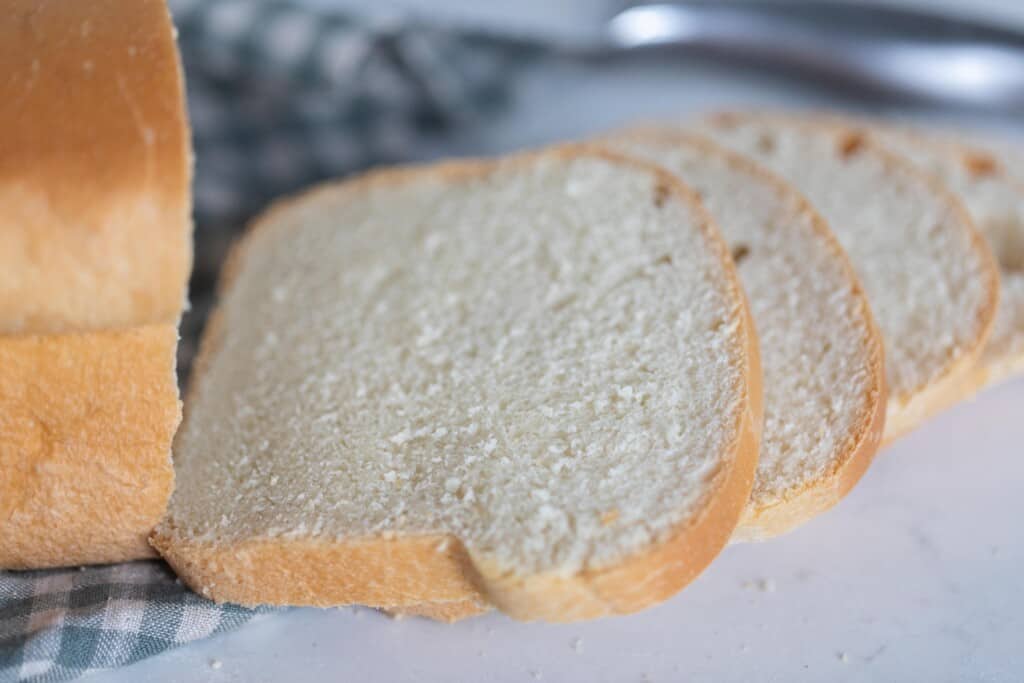
Storage:
Store in an air-tight container for up to five days for best results.
You can also freeze loaves in freezer safe plastic bags for 3-6 months.
Baker’s Schedule:
10 AM: Feed sourdough starter. This will depend on how active your sourdough starter is. It will be at its peak within 4-12 hours.
8 PM: Create the dough and allow it to rise for 10-12 hours.
8 AM the next day: Shape the dough and allow it to rise for 2-4 hours.
10 AM: Bake the bread.
FAQ:
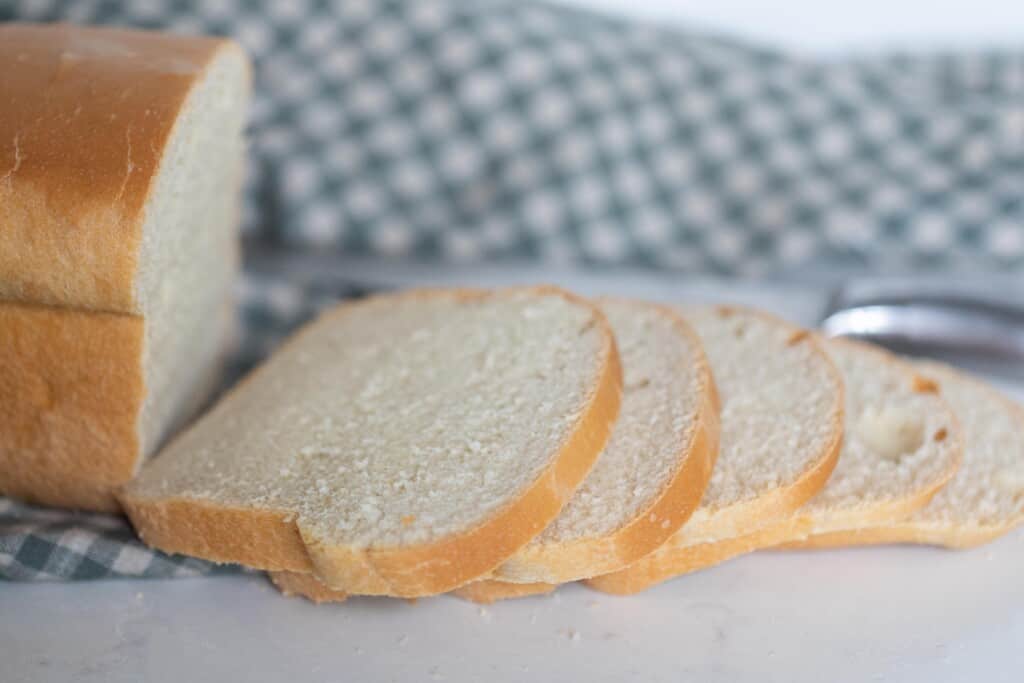
What does buttermilk do to sourdough?
It adds a delicious tangy flavor and also helps break down the gluten strands making the bread really soft.
What do you eat with buttermilk sourdough bread:
Use it the same way you would eat regular sandwich bread:
- Toast
- French toast
- Sandwiches
- With just butter or butter and honey.
Find More Delicious Sourdough Recipes:
- Easy Whole Wheat Sourdough Sandwich Bread
- Same Day Sourdough Bread Recipe
- Sourdough Beer Bread Recipe
- Delicious Sourdough Breadsticks
- Jalapeño Cheddar Sourdough Bread
Sourdough Buttermilk Bread
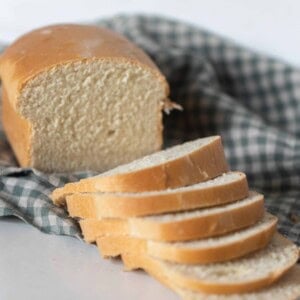
Ingredients
- 1/4 cup butter, softened (57 grams)
- 1 tablespoon honey, 21 grams
- 1/2 tablespoon salt, 8 grams
- 1/2 cup starter, active and bubbly (114 grams)
- 1 1/4 cups buttermilk, 305 grams
- 3 1/2 cups all purpose flour, 473 grams
Instructions
- To a stand mixer bowl with a dough hook attachment, add all of the ingredients. I like to add the flour last, so I can add a bit less or more depending on my starter’s hydration.
- Knead on low until dough is stretchy and smooth. You want it to pull away from the sides of the mixing bowl and be smooth and elastic – about 10 minutes. It should pass the windowpane test. You can also do this by hand kneading.
- Place in a lightly greased bowl with a lid, damp towel, or cover bowl with plastic wrap.
- Allow to bulk rise for 10-12 hours in a warm place like on top of a stove or refrigerator (not in the refrigerator).
- Place the dough on a clean work surface that has been lightly floured.
- Roll the dough flat into a rectangle and roll it up tightly. This adds tension to the dough which helps give it that oven spring.
- Add to parchment lined or buttered loaf pans. Cover with a dish towel.
- Allow the dough to rise again for about 2-4 hours at room temperature, or until doubled.
- Preheat the oven to 375 degrees F.
- Add an optional egg wash for more browning.
- Bake for 45 minutes, or until golden brown. The internal temperature should be about 190 degrees when it is baked through.
- Allow to cool completely before slicing.
Notes
- While this recipe does include buttermilk, if you find yourself out, regular milk will do just fine.
- Making your own buttermilk is super simple. Just use the milk leftover from making butter, or you can make it by adding a tiny bit of vinegar to regular milk.
- If after shaping you run out of time to bake, you can stick this recipe covered with plastic in the refrigerator for 12-15 hours. Then bake straight from the fridge.
Nutrition
Nutrition information is automatically calculated, so should only be used as an approximation.







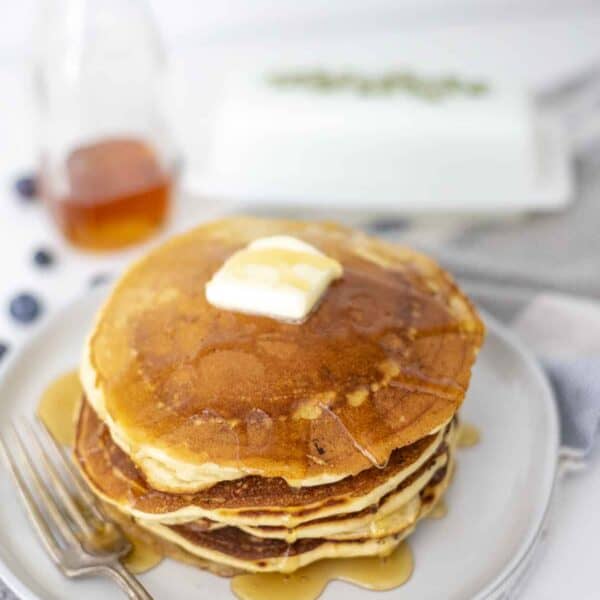






I’m starting sourdough because we need to stay gluten free in our house. I know the sourdough breaks down the gluten. My question is, if I use organic hard white wheat in the recipe I addition to the sourdough starter, does that wheat get broken down too?
Gluten will still be present in sourdough no matter what. Yes it is broken down, but it will never be completely broken down and will still be present. Some people can tolerate sourdough when they are gluten sensitive. But if you have something like celiac, you still cannot have sourdough. The other option would be making gluten free sourdough starter and gluten free sourdough products.
Fresh ground wheat is much easy for our bodies to digest. If you aren’t truly celiac then you should be able to have fresh made bread from 100% fresh ground wheat. I know multiple people who cannot have gluten yet do fine with fresh ground wheat.
Could you substitute milk kefir for the buttermilk? Would there be an issue having 2 different fermented ingredients?
I’ve tried sourdough before and kept it on my counter but it was too much to manage feeding every day. So I am trying to re-learn but keeping the mother in the fridge. So when I am ready to bake this, do I feed the mother and pull out 1/2 cup for the recipe? Or can I pull out a small amount from the fridge, and then feed that little amount to use in the recipe?
You need an active sourdough starter for this recipe. So, you’ll want to take your starter out of the fridge and feed your starter 4-12 hours before using it in the recipe. You want the starter to be at its peak.
Every time I do something that’s not an artisan or just regular sourdough bread from your recipes, my dough totally overferment. Don’t know why, but I think in my case I better let it sit for half the time. Maybe helpful for other ones too.
Oh that is so strange! I wonder why. Thanks for sharing that. The times are just a recommendation and so many variables can take place. As you noticed. As long as it has about doubled in size it’s ready to go. Happy baking.
I am in Colorado so a dry climate and elevation so take all this keeping that in mind. My first rise (which I took to mean “until doubled”) was in less than 4 hours in a cambro container w/ lid in a cabinet at approx 81°F. The second rise (again, doubled) took less than 2 hours in the same cabinet (this time in the loaf tin in a sealed bag). It probably would’ve all been longer on my kitchen counter which is currently sitting around 73°F but I was happy to be able to start and finished the loaf in 7 hours. I’ve now cut into it and the crumb is fantastic, the crust a perfectly soft texture, and delicious tang! I’m definitely doing the recipe again, and I might try regular milk just to see the difference in tang. Thank you!!!!
Thanks for sharing! And so glad you enjoyed this recipe. It’s one of our new favorites.
What did I do wrong? I’ve never had an issue with loaf bread but mine did not rise AT ALL after I put it in the loaf pans… not even in the oven & they both split. I got a wonderful rise on my ON bulk ferment but it was all down hill after that. I’m still a novice bread baker, I think… but have baked many loaves & many recipes. Any thoughts or suggestions are welcome. Thanks!
hmmm .. how long did you bulk ferment for? It’s possible it was over fermented, especially if it was fairly sticky after.
I’d like to bake this in my 13 inch pullman pan. Can you offer advice on how to increase the amount of dough. Any idea how much more flour and buttermilk?
I haven’t tried that, so I am not sure on exact amounts. If you try it, let us know!
Did you try it? I just got my pullman of 13*4*4 inch and would live to bake this recipe in it. But it looks we should at least multiply everything by 1.5.
Please let me know if you tried it!!
Thanks a lot
Do you have to put the honey in it?
Have you tried using whole wheat flour instead of all purpose white flour?
Not yet, but I would think you could sub.
Lisaa,
Thank you for another great recipe.
For the loaf shown in the picture for Buttermilk sourdough, what specific flou type and what sourdough hydration was used to get that consistency. It appears by color to be regular white flour sourdough and I just want to know what result differences to expect if I am using a different flour. I typically make all my breads and sourdough from einkorn all purpose flour so I assume I will need to adjust the recipe accordingly.
Thanks again, Beth
Thank you,
Just a curiosity question- with your warm room temp slow bulk ferment time and the use of buttermilk… I’m wondering if this is any risk of it “going off” especially in the summer? Or ? just how tangy is tangy? I hope that latter part makes sense – the reason I ask .. sheepishly – when I was first really getting the hang of sourdough I made a sandwich loaf that called for buttermilk and the resulting bread was SO very sour -almost like a storebought loaf that used icky flavoring. So- in saying all that- after reviewing what I did vs the recipe used- I concluded it was newbie error and not recipe error:) Now, a couple years later- have the heebies of using buttermilk with long ferment times:) Thanks! Teresa
It definitely can make the bread a little more sour, but make this all the time, and find it quite tasty.
Have you tried this with fresh ground flour? Any suggestions?
I have not, but it should work! It just may make your loaf a bit denser. Let us know if you try it!